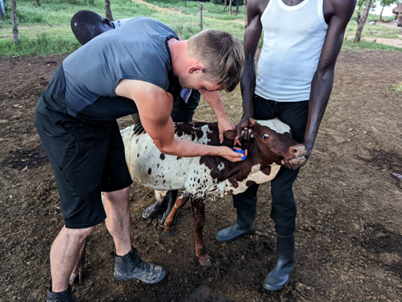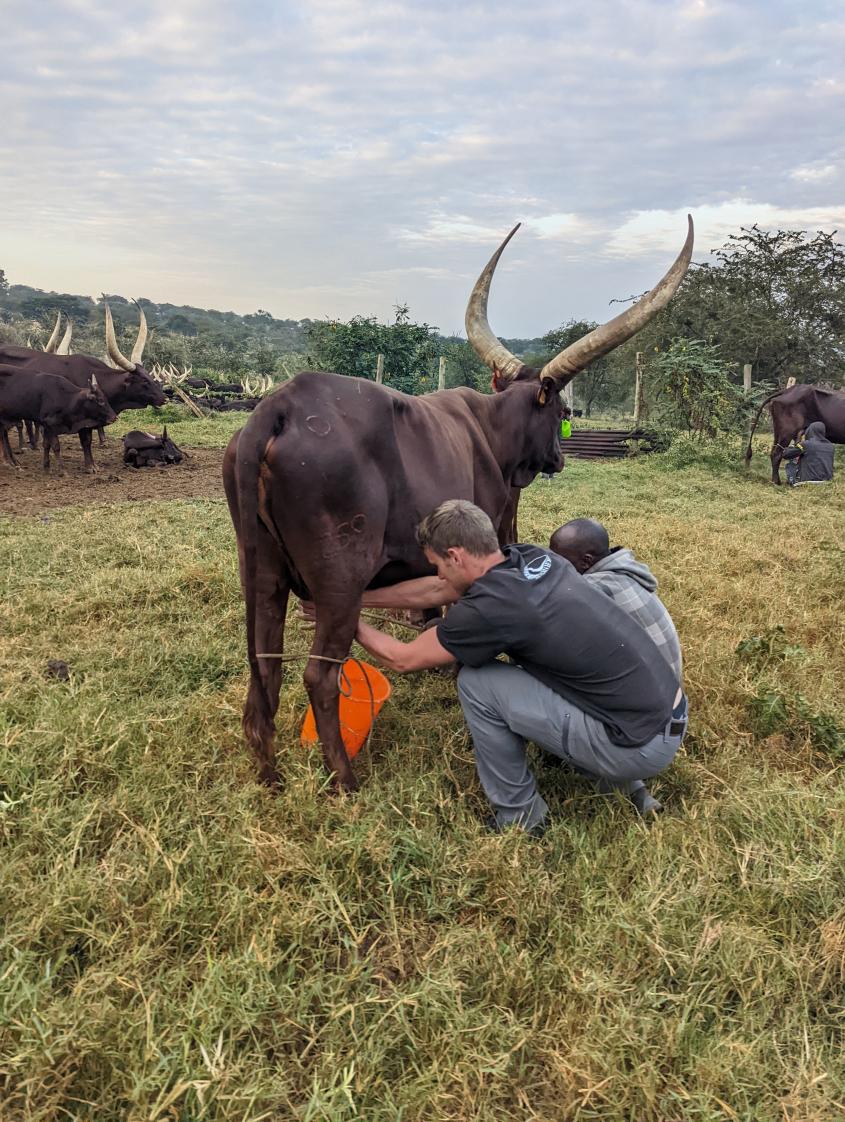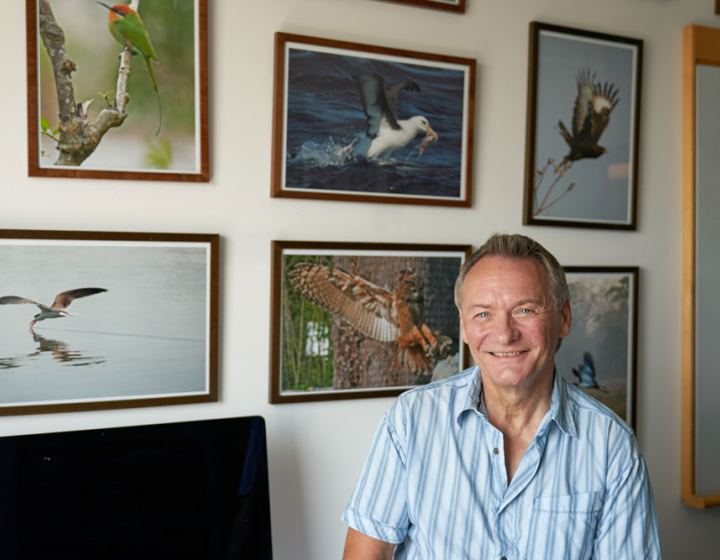Students in the field: Seth Shirky studies bovine health in Uganda
Given my obsession with members of the bovine species and lifelong dream to travel to Africa, I was eager to travel to Uganda for two months this summer to work with production animal veterinarians helping understand and address the unique challenges faced by livestock producers. This adventure was made possible through Cornell’s Expanding Horizons Program, allowing me to spend a summer immersed in Ugandan veterinary practice.
My trip began on a bumpy six-hour pickup ride through the Ugandan countryside to the Packwach district of Northern Uganda. Our destination was a large cattle ranch belonging to the client of Dr. Kennedy, my Ugandan mentor, where we would build two corrals with crush systems to handle his cows. This was a perfect opportunity to learn about Ugandan cattle handling systems, grazing land management, production animal economics, and practicing veterinary medicine in the field.
For the next few days, we mixed concrete, set fence posts, and drove thousands of nails under the relentless equatorial sun, and spent cool evenings under the palms on the banks of the Nile River. The hard days’ work was offset by the hospitality of the locals, who delighted in introducing me to Ugandan cuisine and teaching me to dance and play the local percussion instrument, the calabash.

Photo: Seth Shirky
On the ranch, Dr. Kennedy introduced me to the challenges of raising cattle in a Ugandan ranch system. The native Ankoli cow is a very popular breed in Uganda due to its adaptation to the hot, dry environment and resistance to tick- and fly-vectored disease. While the breed’s incredible horns provide defense against enemies, they can present a risk to herd-mates, with horn wounds representing a large portion of cases needing veterinary attention. These wounds however are usually small and typically heal with little treatment needed.
Tick issues
Apart from horn wounds, tick-borne diseases and Tsetse-fly-vectored trypanosomiasis make up most of the disease infections in Ugandan cattle. Traveling to different farms, I observed a specific group of tick-borne diseases as the primary cause of animal sickness and economic impact — in particular, East Coast Fever, Anaplasmosis, and Babesiosis. Many share clinical signs and occur as co-infections—
making diagnosis and treatment challenging. Adding to the challenge, diagnostic labs are hours away and tick-borne disease are often acute; waiting for test results before treatment could result in the disease progressing beyond a treatable point.
Tick control is central to preventing these diseases, with acaricide dipping and spraying being the primary method. However, for effective acaricide use, the specific tick species must be identified, as well as the tick’s resistance and susceptibility to the acaricide

classes and concentrations being used for treatment. At Makerere University, I observed research at the Research Centre for Tropical Disease and Vector Control (RTC) on preventing tick-borne disease and tick resistance, and collaborated with Eliyah Lotiang, veterinary medicine student from Makerere, on our own research to identify ticks and tick-borne diseases in Uganda’s remote Karamoja region, which suffers from poverty and chronic malnutrition. Here, pastoralist cattle herders rely on cattle for survival, and experience widespread food shortages when herds suffer from losses due to disease and drought. As a Karamoja native, Eliyah has experienced these impacts firsthand. As a large animal veterinary student, I was motivated and excited to participate in research that will impact many people's quality of life.
The project included surveying farmers on their views and practices concerning treatment and prevention of tick-borne diseases to help determine the most appropriate treatments and management practices. Ultimately, the goal is to increase cattle farmers' overall production and profitability by decreasing tick-borne disease and acaricide resistance.
Making memories
A highlight of my time in Uganda came during a trip to Queen Elizabeth National Park in western Uganda, where I took in the breathtaking scenery and incredible array of native animals. The lakeside villages are not only home to the local dwellers but also livestock and countless other wildlife species. This daily interaction of wild and domesticated animals with humans presents many opportunities for disease transmission from wild to domestic animals and to humans.
In their efforts to support the health of the park’s wildlife, the veterinary staff at Queen Elizabeth National Park are working to increase their wild animal sample bank at the Queen Elizabeth Research Center. As part of this effort, I assisted in collecting a sample from a wild cape buffalo, giving me the opportunity to experience the tranquilization and sampling process—a stand-out moment from my summer.
My Expanding Horizons experience allowed me to learn from and collaborate with colleagues and fellow cow enthusiasts, developing my veterinary skills and given me an amazing opportunity to experience life in “the pearl of Africa”, Uganda.
 About the Author:
About the Author:
Seth Shirky, class of 2024, is a third-year DVM student at Cornell University, College of Veterinary Medicine. He received his bachelor's or animal science degree from Cornell University in 2020. His goal is to become a production animal veterinarian and work with animal producers to supply the public with healthy, wholesome animal produce. As a production veterinarian, Seth hopes to use his knowledge of production animal management and judicious, effective use of treatments to advocate for and work with farmers to ensure the highest level of animal health and welfare on farms.





